If you had to attempt to drink water out of a firehose, three things would probably happen:
- You’d get a 100-PSI wet smack in the face,
- Everyone in your immediate vicinity would laugh at you, and
- You’d definitely never try it again.
And yet, every year, thousands of brave souls register for paramedic training, which is the metaphorical equivalent of drinking out a firehose; except that in place of the water is fundamental medical information.
Your job? To keep up.
Unfortunately, half of all candidates drop out because they are overwhelmed by the volume of information and the staggering pace at which it’s covered.
That won’t be your fate.
It’s the aim of this paramedic study guide to equip you with the right tools and approach to ace your paramedic prep and the NREMT-P exam. Step-by-step, our experienced team, led by National Registry and Flight Paramedic Jesse Owens, is going to walk you through what you need to do to pass and pass well. Since the tender age of 18, he has operated in many capacities as a 911 Paramedic, Critical Care Army Flight Paramedic, Civilian Flight Paramedic, and SWAT medic.
In other words, he knows a thing or two, and now he’s here to give you some crucial tips for acing the NREMT-P exam. So now, let’s take a closer look at what you can expect from the challenge …
What Can You Expect From The NREMT-P Cognitive Exam?
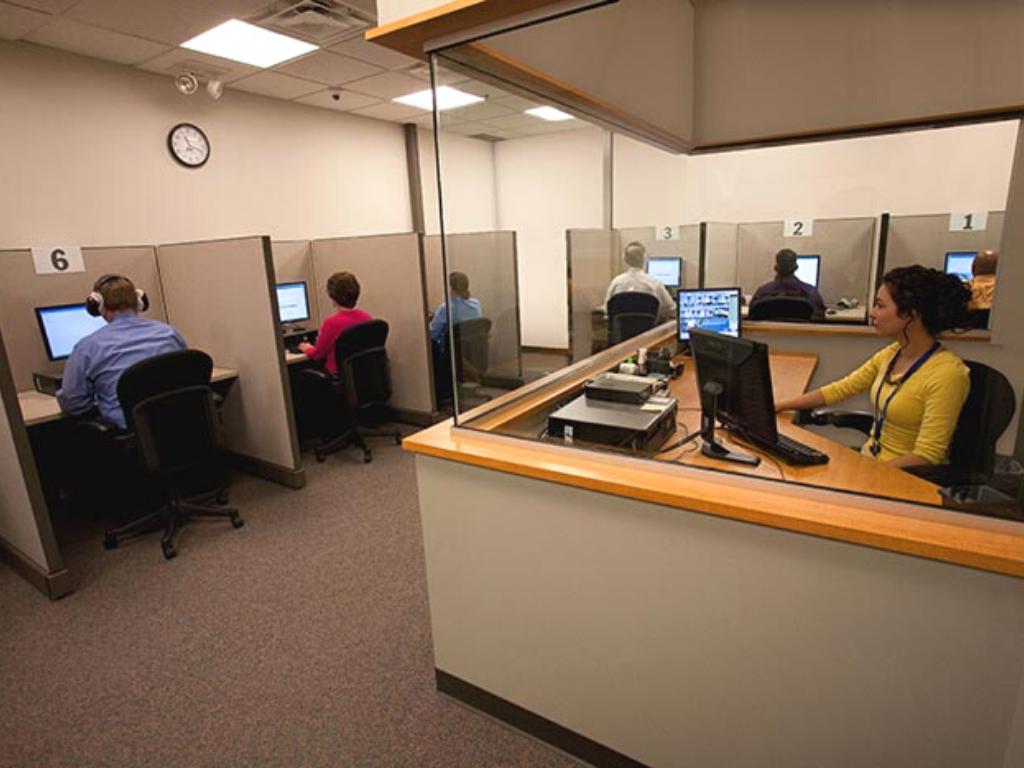
As you probably know, in order to become a paramedic, you must have at least six months’ experience as an Emergency Medical Technician (EMT) under your belt, which means that this won’t be your first time taking an NREMT exam.
To refresh your memory, the National Registry uses Computer-Based Testing (CBT) to administer its certification exams, which are hosted by Pearson Vue testing centers all over the United States.
The NREMT-P cognitive exam is a two-and-a-half-hour affair that’s designed to assess your true proficiency as a paramedic. But it’s not like your regular exam, which has a fixed number of questions.
Rather, the NREMT-P exam starts off with easy questions that get progressively harder as you answer them correctly. (In other words, if you find the questions becoming more and more difficult, it’s a good sign you’re getting things right!)
At some point, however, you might get a question wrong, which will prompt the computer to back off on challenging you too much. You’ll resume with easier questions that, once again, get harder and harder as you answer them correctly. After several cycles of this, the algorithm will be able to determine your true proficiency with a certainty of 95%.
You pass the NREMT-Paramedic exam by having your proficiency level land above the passing standard. If it falls below, you’ll have to retake the test in 14 days. Candidates can also fail because they run out of questions or time, although that happens much less frequently.
Now that you know how the certification exam works, here’s our best advice on preparing for your paramedic training and coping with your studies for the NREMT-P exam!
Top Tips For Preparing For Your Paramedic Training
If you leave this paramedic study guide having learned one thing only, let it be this: preparation is KEY to passing your paramedic training (and the NREMT-P exam). Your schooling will speed along at 100 mph, so the more you’ve studied and learned going into it, the better you’ll cope.
What this means is that the minute you’re accepted and have paid your tuition, it’s go time! Here are the steps you can take to prepare yourself to embark upon your paramedic prep:
- Create a daily study schedule
- Learn the content before class
- Use paramedic flashcards to drill yourself on the important facts
- Cardiology: Understand the basics of ECGs
- Pharmacology: Know your meds!
- Familiarize yourself with ALS tools and techniques
1. Create A Daily Study Schedule
There’s an overwhelming mountain of content to learn before you’ll be ready to take the NREMT-P cognitive exam (and embark upon a career as a paramedic). The best way to start, therefore, is to portion out the key areas of study, like cardiology, trauma, pharmacology, and anatomy, for example, into daily study goals.
Approaching the challenge of paramedic training with a detailed study schedule will help you to establish achievable daily goals, making it easier to monitor your progress AND feel a lot less stressed about the amount of work you need to get through. (Check out our free study planners here, which you can download and customize.)
2. Learn The Content Before Class
As we said before, the minute you’ve paid your tuition, start studying. The goal is to study, process, and learn the material you’ll cover in class before you actually embark upon your training. (This might sound like the opposite of what you did during school but paramedic training ain’t nothing like high school, baby.)
- Actively read through the textbook, using a highlighter and making study notes to capture the most important concepts and definitions you need to remember.
- Make flashcards or use a digital flashcard app like RemNote or Brainscape to drill yourself on these essential facts.
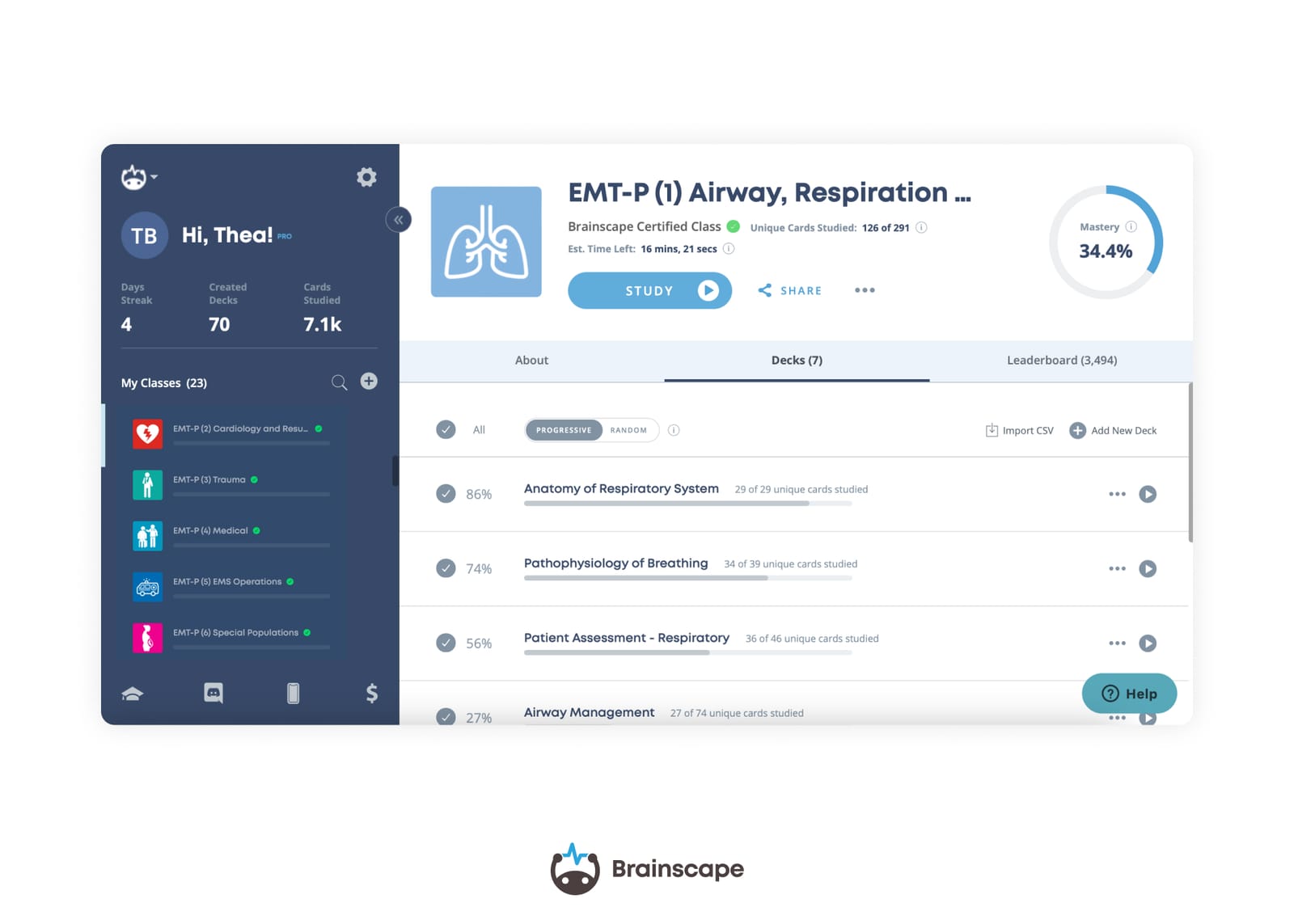
- Watch or listen to exam prep videos. Alternatively, listen to podcasts when driving, exercising, or otherwise occupied.
- Write down any questions or points of confusion you’d like cleared up.
- Use class time for consolidating information already learned and for asking questions.
If you begin your paramedic prep without a decent working knowledge of everything, you’ll be overwhelmed and constantly trying to play catch-up. This is particularly true of the cardiology and pharmacology section, which we’ll look at next, followed by a powerful tool for helping you memorize the mountain of content you’ll encounter during your paramedic training …
3. Cardiology: Understand The Basics Of Ecgs
Paramedic training is incredibly accelerated, so going into it with a basic understanding of ECG rhythms and what they look like will be an enormous foot up on the competition. For example, can you tell the difference between the following heart arrhythmias?
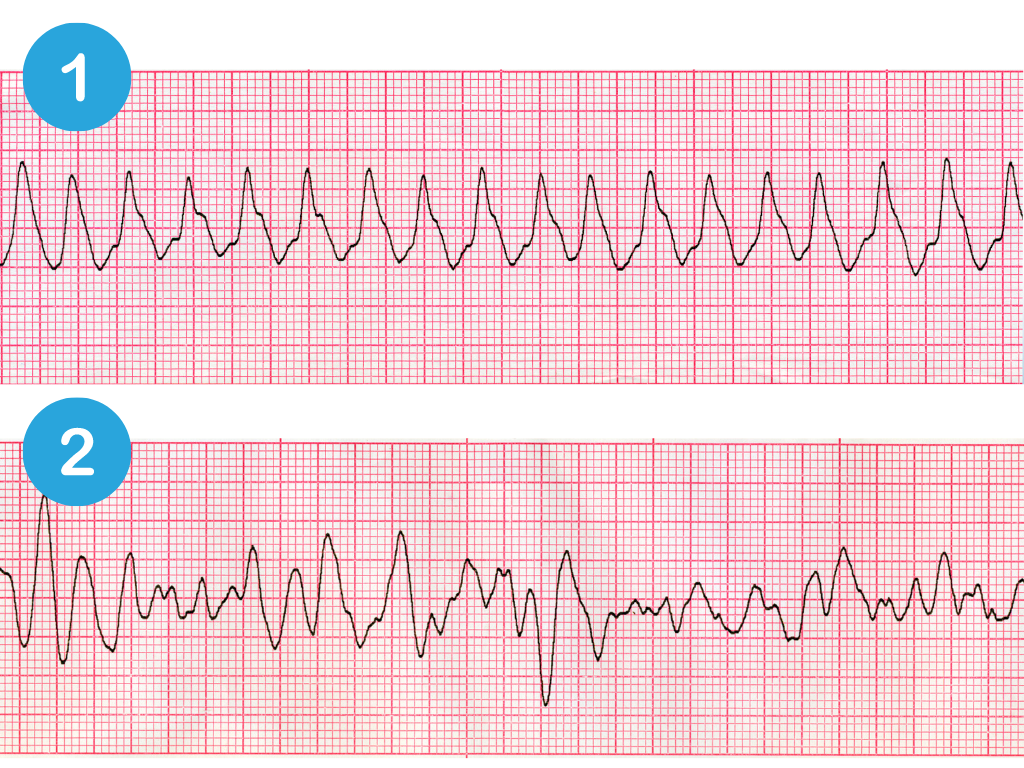
A really helpful resource for studying ECG rhythms is SkillStat, which covers 27 of the most common arrhythmias, for example, atrial fibrillation, atrial flutter, ventricular tachycardia, ventricular fibrillation, junctional rhythm, and more. You can also work through Brainscape’s flashcard decks on cardiology & resuscitation.
4. Pharmacology: Know Your Meds!
Building a working knowledge of the medications used in modern pharmacology and their various indications, interactions, dosages, and side effects will be one of the most important, yet demanding, aspects of paramedic prep. Additionally, on average, a paramedic has 30 to 40 drugs in their medic bag, and you’ll need to learn what each one does, in which scenarios you should use them, and how.
For example: Why might you administer glucagon to a patient? And how would you administer it?
Glucagon is administered via intramuscular injection to patients with low blood glucose. It can also be used for an overdose of beta-blockers or calcium channel blockers.
Another example: Which medication should be administered first in a patient presenting with anaphylaxis? And why?
Epinephrine. Epinephrine is a potent Alpha-I agonist and bronchodilator that improves the systemic vasodilation and bronchoconstriction found in an anaphylaxis patient.
Learning this information constitutes a significant amount of sheer memory work, so if you can get this done before your paramedic training even begins, you will place yourself miles ahead of your peers.
Now that you understand the task ahead of you, here’s the “secret sauce” to getting it done!
5. Use Flashcards To Drill Yourself On The Important Facts
Flashcards are among the most reliable tools for NREMT EMT prep because they help you commit the vast amount of medical knowledge, terminology, and procedures to memory in a manageable way. They help you learn faster by using three cognitive science-backed techniques: active recall, spaced repetition, and metacognition.
Active recall: Instead of passively reviewing notes or rereading a textbook, flashcards prompt you to actively retrieve the answer from your memory. That mental effort strengthens recall pathways and helps you learn twice as fast as passive study methods like highlighting, listening, or reading.
Spaced repetition: Our brains are wired to forget material unless it’s revisited. By reviewing content at carefully timed intervals, you refresh and reinforce your memory just before it fades. Think of it like practicing vital skills such as CPR or patient assessment: repetition over time builds automaticity. Research across hundreds of studies shows that spaced repetition consistently boosts learning outcomes.
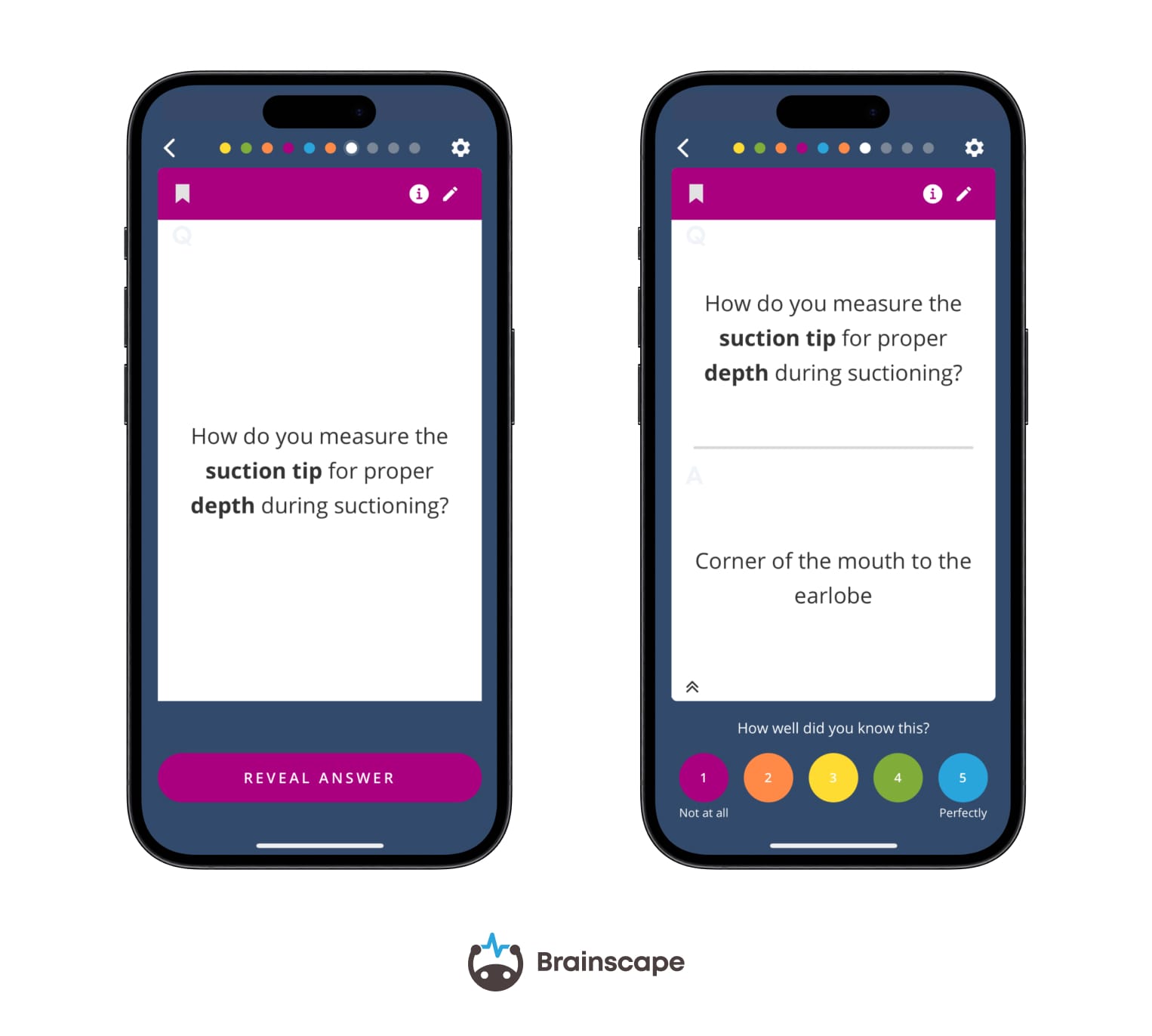
Digital flashcard platforms such as Brainscape or Quizlet automate this timing for you. Their adaptive algorithms ensure that harder material appears more frequently while topics you’ve mastered show up less often. This keeps your study sessions focused on what you actually need to review, leading to long-term retention. In fact, adaptive algorithms for spaced repetition have been proven to increase learning efficiency among medical students.
Metacognition: With every card, you also reflect on how confident you are in your answer. This process heightens awareness of what you truly know versus what still needs work, so your study time targets weaker areas. Even better, rating your confidence after a recall attempt strengthens memory by engaging deeper levels of thinking.
One of the biggest perks of digital flashcards is their portability. You can review them in short bursts: during a meal break, on public transit, or between calls on a clinical shift. These small study windows add up to dozens of extra review opportunities every day.
6. Familiarize yourself with ALS tools and techniques
One final way you can prepare yourself for paramedic training is to familiarize yourself with the suite of ALS (Advanced Life Support) equipment and techniques you’ll be called upon to use and perfect during your schooling.
How you can do that is through volunteering, going for a “ride-along” with qualified paramedics, or even just asking someone you know in EMS to show you the tools of the trade and how they work. Failing all of the above, YouTube is a truly fathomless source of demonstration videos on EMS tools and techniques, like these ones:
- Intubation Procedure Setup and Technique
- Paramedic Medications
- AEMT I99 Paramedic - Advanced Skills: Trauma Assessment - EMTprep.com
Remember, the goal is to know what the various pieces of equipment are and what they’re used for. You’ll learn how to use them during your paramedic training, so don’t worry about that too much for now. But going into it with at least a little familiarity with these tools primes your brain for learning, making the practical aspect of your paramedic training a more seamless experience.
And now that you understand how you can best prepare for your paramedic training and the NREMT-P cognitive exam, here are our best tips for acing your studies!
Top Tips For Acing The NREMT-Paramedic Exam
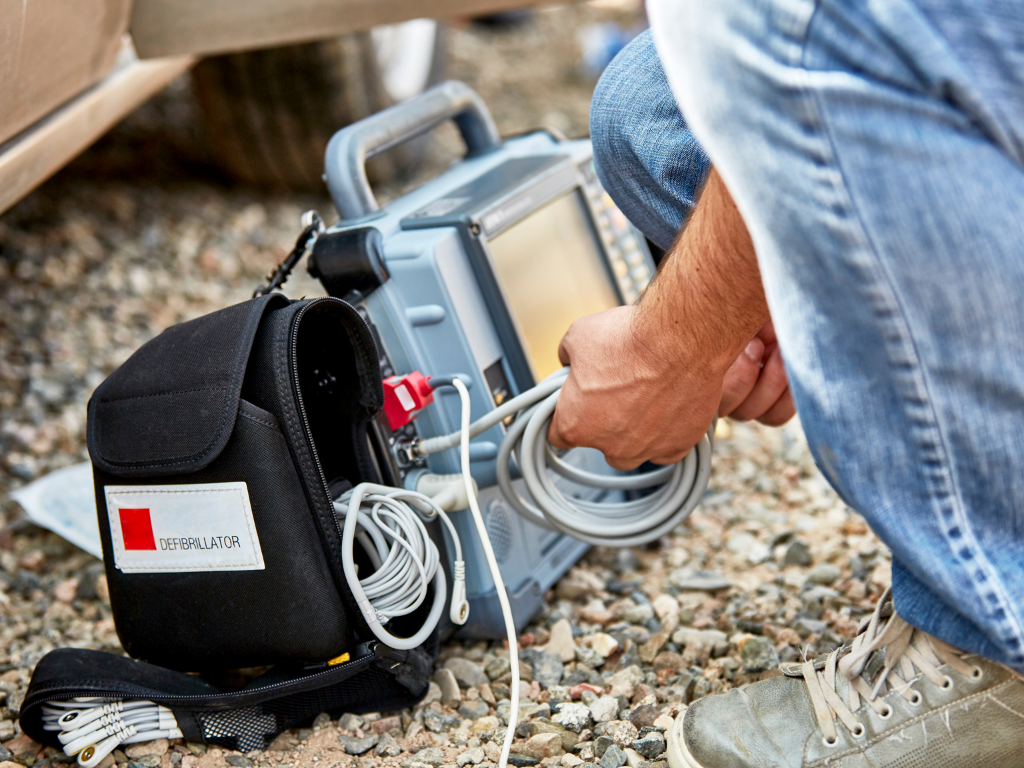
We’ve covered quite a bit of ground so far, with the focus of helping you to prepare. Now, with your paramedic training proceeding at full speed, here are some crucial tips to keep up and avoid overwhelm.
7. Repetition Is Key! Continuously Revise The Content
By studying a little bit every day, before, during, and throughout your paramedic prep, you’ll ensure that you keep all of that content fresh in your mind so that, come the final day of your training, you’ll be ready to take on the NREMT-P exam!
Here are some essential daily steps you can take to stay on top of your workload:
- Revise the necessary sections/chapters ahead of each class.
- Go into class with a decent working knowledge of what’s being covered.
- Have questions prepared.
- At the end (or beginning) of every week, revise what’s been covered. Knowledge decays over time, and you don’t want to get to the NREMT-P exam only to discover you’ve forgotten everything!
Pro Tip: You can use digital flashcards to automate your review schedule!
In addition to this …
8. Do Practice Exams And Questions
It’s imperative for successful paramedic prep that you do as many practice questions and exams as you can get your hands on. And the sooner you do them—even right from the beginning of your paramedic training—the better! Here’s why: answering practice questions shows you …
- How the information you’re learning will be tested in the exam,
- The important concepts you should be paying attention to,
- How to use critical thinking and reasoning to arrive at the best possible answer, and
- Which concepts/facts you might have a problem with (and therefore need to focus on).
Moreover, seeing the information framed as exam questions will help you remember it SO much better than if you just read it in a textbook. (There’s nothing like the threat of seeing something show up in an exam to compel your brain to hang on to that information.)
And, finally, doing practice questions will also show you that the NREMT-P exam isn’t anything to be feared! As long as you know your stuff—and you will—you’ll do just fine.
Pro Tip: When you do a practice exam, set a timer to 150 minutes (two-and-a-half hours) so that you learn how to manage your time properly.
9. Practice Your Emergency Care Skills Perfectly
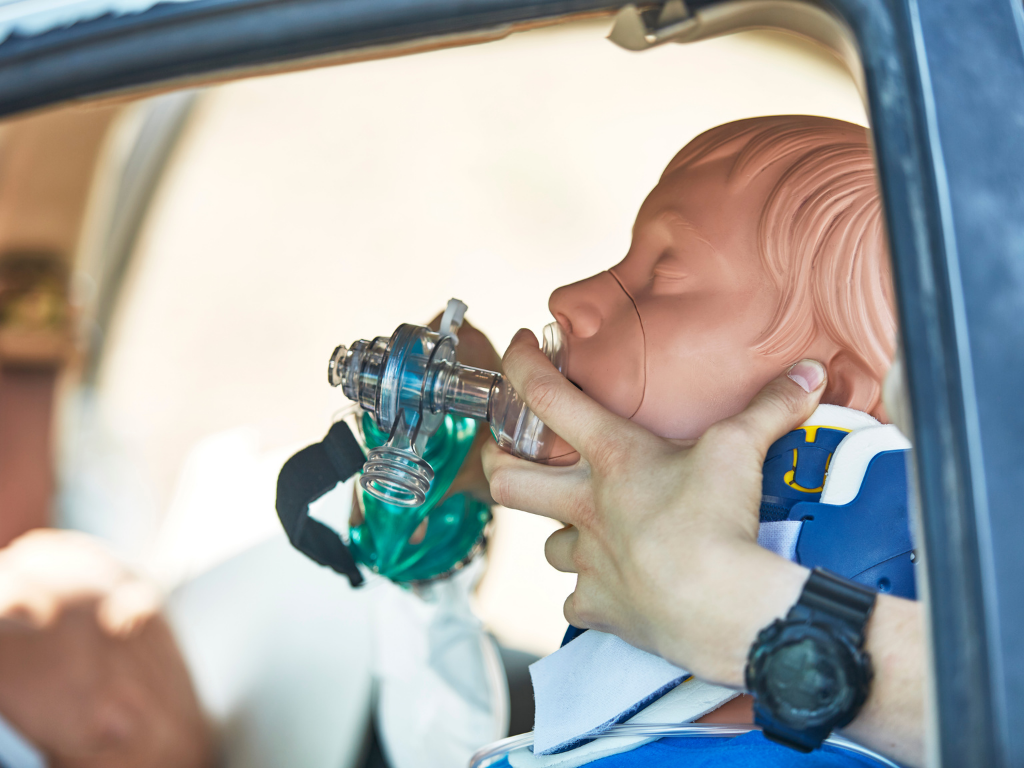
Until now, we’ve been rather focused on the NREMT-P cognitive exam, but what about those crucial emergency care skills? You’ll need to demonstrate a great proficiency in practical skills during your paramedic training, without which you simply won’t pass.
Our advice is to practice, practice, practice those skills as often as you possibly can … but practice them PERFECTLY. What this means is that speed comes second to perfection. And you definitely don’t want to evolve any bad or sloppy habits that become harder to unlearn later on.
So, when you practice, practice perfectly. With time and repetition, your skills and speed will improve. And before long, those techniques will become muscle memory!
10. Get Comfortable With Learning And Asking Questions

So, you’re shy? Afraid of looking stupid?
You and everyone else in your class.
It’s time to grow out of that, my friend. Be brave and ask questions. Remember, the only stupid question is the unasked question. Besides, asking questions is an integral part of the paramedic’s job: when they’re not asking patients questions, they’re consulting with their teammates and superiors or following up with doctors and nurses.
In emergency medicine, your learning is never done. With every medical, pharmacological, and technological advancement, you’ll need to learn, adapt, and evolve. And so, a part of being a good paramedic is being a diligent lifelong student of medicine.
11. Participate, Communicate, And Collaborate
As the front-line of care for the sick and injured, it is essential that you become an effective communicator and team member. What does this look like?
- Have a good attitude and be easy to work with,
- Build a rapport with your class and teammates,
- Always leave the rig (ambulance) in good condition,
- Help your peers when they struggle, and
- Keep learning and asking questions.
You might be a grumpy sod in real life, but in emergency medicine, if you’re unpleasant to work with, you won’t get very far. So, use your paramedic training as an opportunity to work on your attitude and become a better team player.
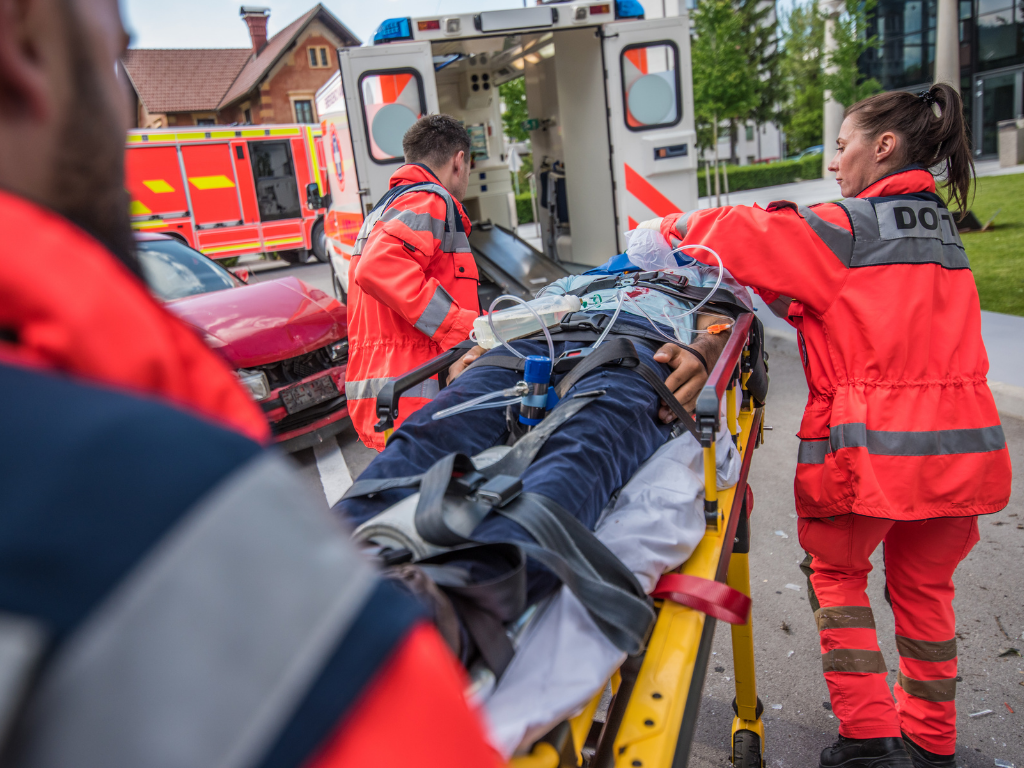
12. Embark Upon Your Internship Fully Schooled
Finally, your paramedic training culminates in a field internship in which you’ll trade in the controlled classroom environment for the chaos of the streets. And while you can never predict what’ll happen “out there”, you can be damned sure that you yourself are fully prepared by being organized and knowledgeable.
So, our advice is to make sure you embark upon your internship as fluent in all that crucial paramedic content as possible. Know your medications, treatment protocols, emergency care skills, local hospitals, and ambulance inventory, and, with frequent review, make sure to keep your memory of all this as sharp as the day you first learned it.
It’s perfectly okay to make a few on-scene mistakes, but what’ll be harder for your superiors to overlook is a paramedic who’s missing out on basic information that could, potentially, make them a liability to the team.
A Final Note On Acing Your Paramedic Training
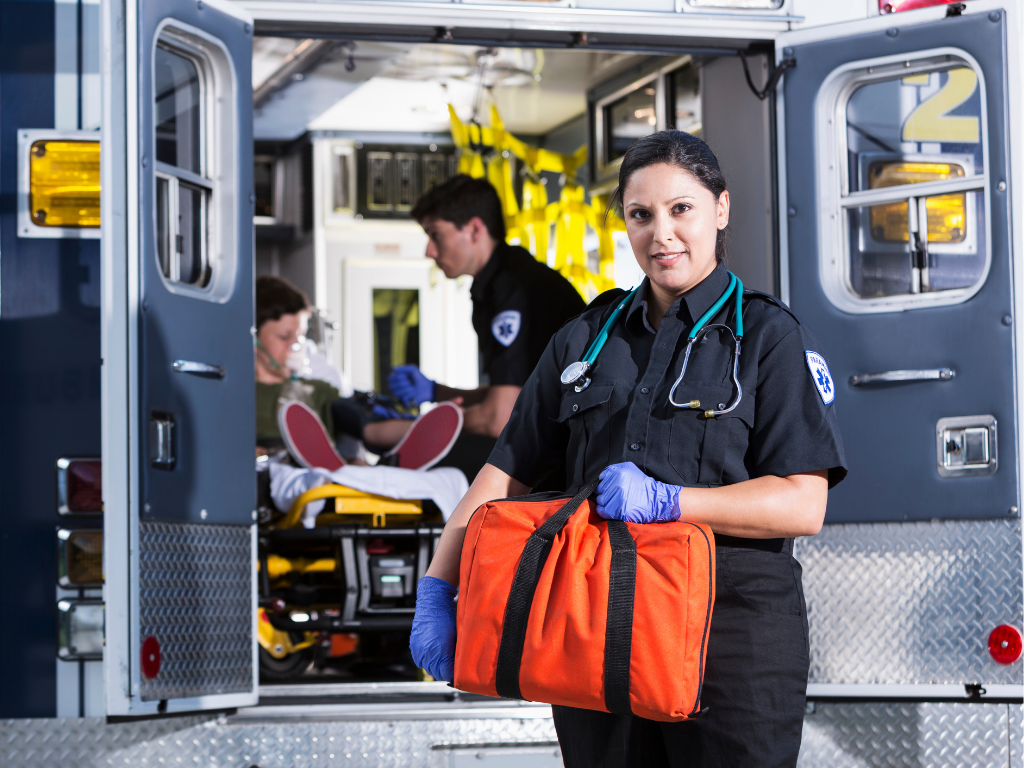
So, there you have it! The tools, tricks, and tips for acing your paramedic training and the NREMT-P cognitive exam:
- Start studying as soon as your application is accepted,
- Portion out the content into manageable daily study goals,
- Pay special attention to cardiology and pharmacology,
- Use these digital flashcards like Quizlet or Brainscape to memorize the facts,
- Review older content throughout your training so that you never forget it,
- Do frequent practice questions and exams,
- Practice your emergency care skills perfectly (and often),
- Get comfortable with asking questions, and
If you follow the advice laid out in this paramedic study guide, you will have everything you need to conquer the NREMT-P cognitive exam and start a rewarding career in emergency medicine!
Additional Reading
- EMT Jobs: how to get one and be successful!
- Paramedic vs nurse: what's the difference?
- How to get the best paramedic jobs
References
Kang, S. H. (2016). Spaced repetition promotes efficient and effective learning. Policy Insights from the Behavioral and Brain Sciences, 3(1), 12–19. https://doi.org/10.1177/2372732215624708
Karpicke, J. D. (2012). Retrieval-based learning: Active retrieval promotes meaningful learning. Current Directions in Psychological Science, 21(3), 157-163.
Kerfoot, B. P. (2010). Adaptive spaced education improves learning efficiency: A randomized controlled trial. Journal of Urology, 183(2), 678–681. https://doi.org/10.1016/j.juro.2009.10.005
Sadler, P., & Good, E. (2006). The impact of self- and peer-grading on student learning. Educational Assessment, 11(1), 1–31. https://doi.org/10.1207/s15326977ea1101_1
